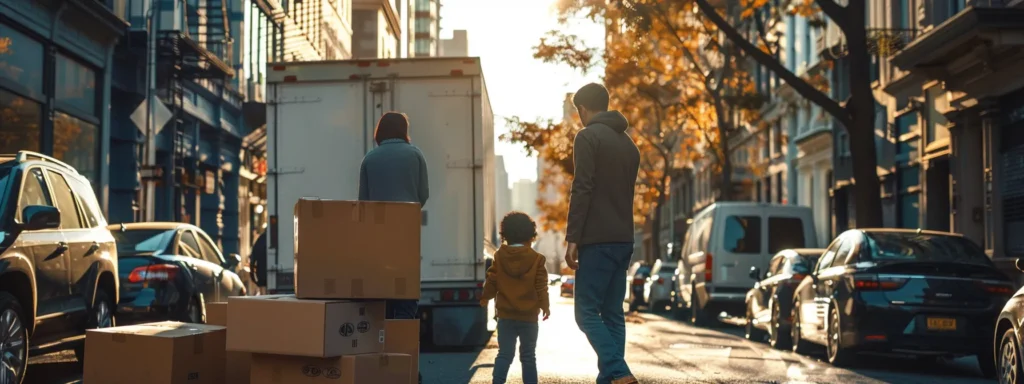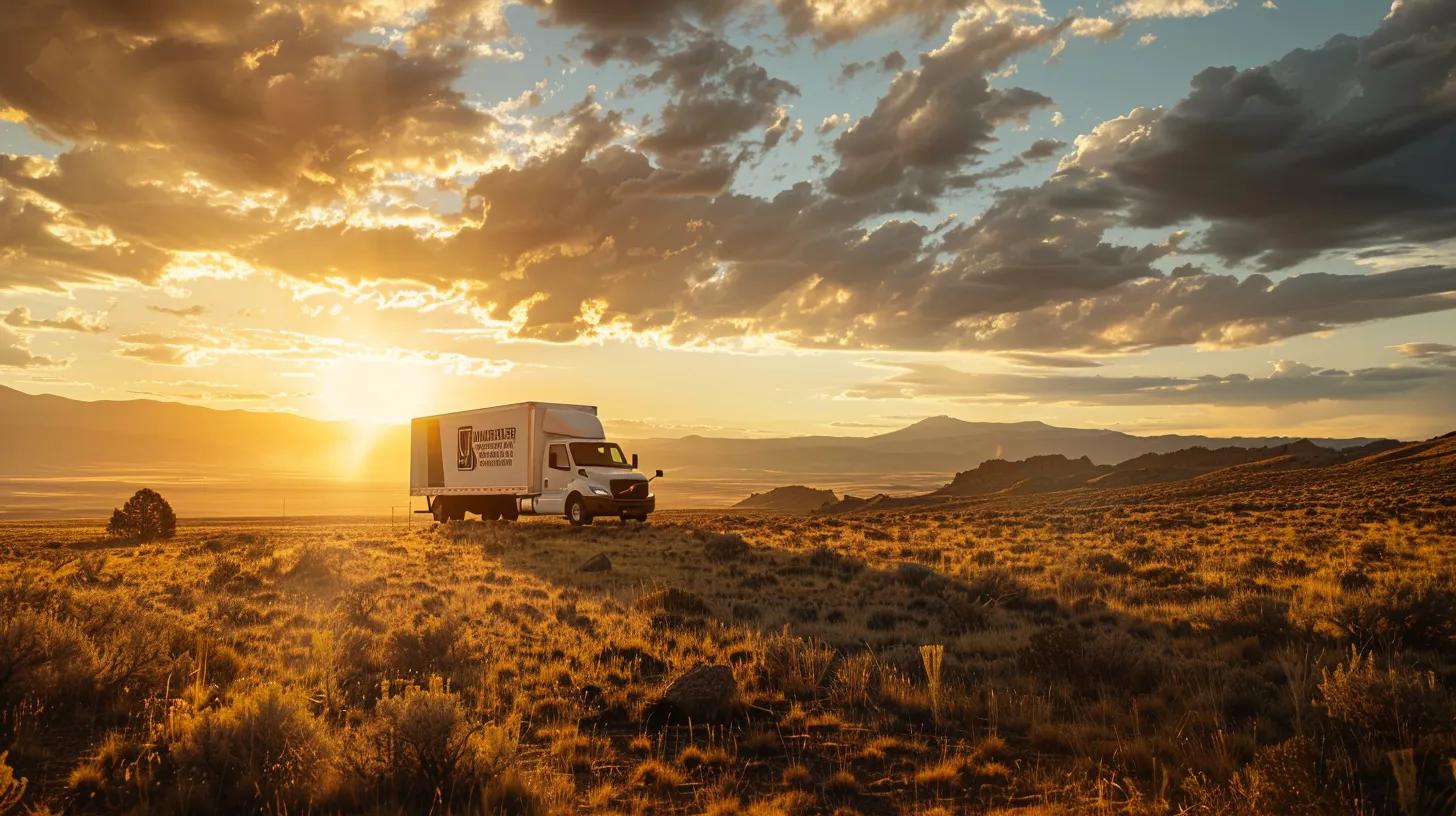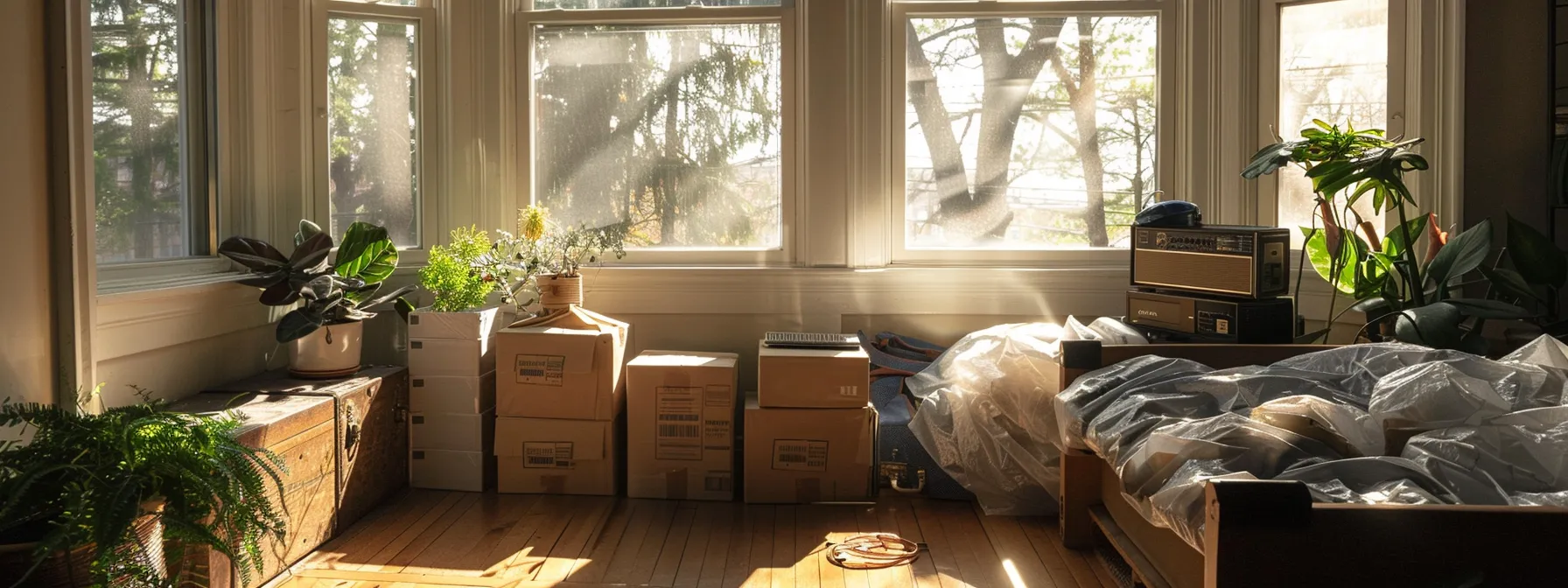Table Of Contents:
- Step-by-Step Guide to a Stress-Free Interstate Move: Your Essential Checklist
- Planning Ahead for a Smooth Interstate Move
- Establishing a Moving Timeline
- Creating a Relocation Budget
- Researching Your New Location
- Gathering Important Documents
- Notifying Relevant Parties of Your Move
- Decluttering and Organizing Your Belongings
- Sorting Items to Keep, Donate, or Discard
- Holding a Garage Sale or Donating to Charity
- Managing Hazardous Materials Appropriately
- Creating an Inventory of Your Possessions
- Preparing Special Items for Transport
- Selecting a Trustworthy Moving Company
- Researching and Comparing Movers
- Understanding Different Types of Estimates
- Verifying Licenses and Insurance Coverage
- Reading Reviews and Testimonials
- Booking and Confirming Your Moving Date
- Packing Strategies for Efficiency and Safety
- Gathering Necessary Packing Supplies
- Packing Room by Room Methodically
- Labeling Boxes for Easy Unpacking
- Protecting Fragile Items
- Preparing an Essentials Box for Immediate Use
- Managing Moving Day Effectively
- Coordinating With Your Movers
- Conducting Final Checks of Your Home
- Ensuring Safe Access for Moving Personnel
- Keeping Valuables and Essentials With You
- Documenting the Condition of Your Items
- Settling Into Your New Home Seamlessly
- Unpacking and Organizing Your Space
- Connecting Utilities and Services
- Updating Your Address and Records
- Meeting Neighbors and Exploring the Community
- Tips for Adjusting to Your New Environment
Step-by-Step Guide to a Stress-Free Interstate Move: Your Essential Checklist
Are you overwhelmed by the thought of moving your household goods across state lines? You’re not alone. In fact, studies show that moving is one of life’s most stressful events. In this step-by-step guide to a stress-free interstate move, I’ll outline essential strategies, from planning ahead and decluttering to selecting a trustworthy moving company. You’ll gain valuable insights on packing efficiently and managing moving day effectively. By addressing common pain points and providing practical tips, this checklist will help you navigate the complexities of home moving, ultimately making your transition smoother while keeping costs in check with a moving cost calculator.
Planning Ahead for a Smooth Interstate Move
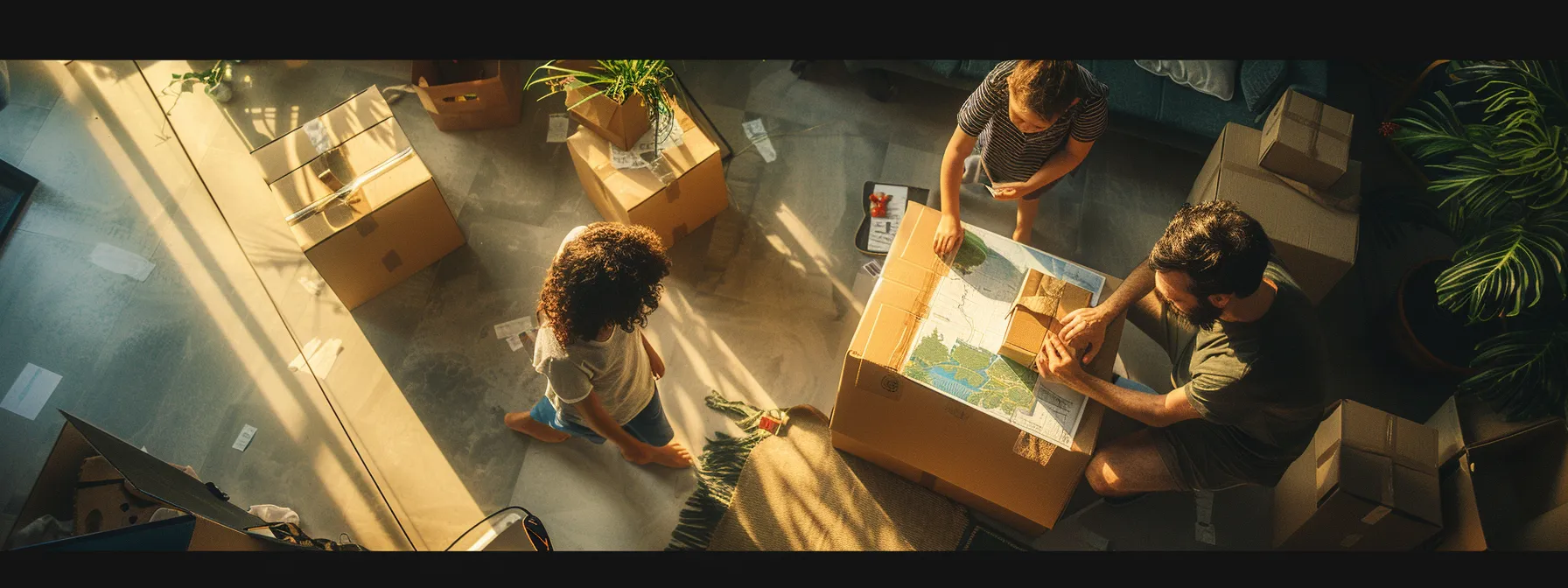
To ensure a smooth interstate move, it’s critical to plan ahead. Start by visiting the FMCSA Homepage and establishing a moving timeline that aligns with your schedule. Next, create a relocation budget to keep your expenses in check, especially when considering white glove moving services. Researching your new location helps you adjust quickly, while gathering important documents ensures nothing essential is left behind. Don’t forget to notify relevant parties of your move for seamless logistics.
Establishing a Moving Timeline
Establishing a moving timeline is crucial when planning your interstate move. As someone with experience in this field, I recommend starting at least eight weeks in advance. Begin by researching reliable moving companies and ensuring they hold the necessary licenses. This gives you time to compare brands and consumer reviews, helping you find the right fit for your needs. Throughout this process, I suggest breaking down tasks by week to create a manageable schedule that includes packing, securing movers, and notifying important parties about your change of address.
Creating a Relocation Budget
Creating a relocation budget is essential for a successful interstate move. As I’ve navigated this process numerous times, I’ve found that it’s wise to account for all potential expenses, including hiring long distance movers and the cost of packing materials like crates. Additionally, consider organizing a garage sale to declutter and offset some moving costs. You should also keep in mind the pricing structure of international van lines, ensuring you select a van service that fits your budget without sacrificing quality.
| Expense Category | Estimated Cost |
|---|---|
| Long Distance Movers | $2,000 – $5,000 |
| Packing Materials (Crates, Boxes) | $100 – $300 |
| Garage Sale Earnings | Varies |
| International Van Lines | $2,500 – $7,500 |
Researching Your New Location
Researching your new location is a vital step when I plan to move interstate. Understanding the neighborhood’s amenities, schools, and local services helps ensure a smooth transition for myself and my family. I recommend creating an inventory of what’s important to you—like proximity to work or recreational areas—so you can effectively navigate your checklist. This knowledge not only eases the adjustment process but also minimizes potential stress, allowing for a more confident and informed move.
Gathering Important Documents
Gathering important documents is a crucial step in your interstate move. I always recommend collecting items such as your driver’s license, insurance information, and any contracts related to your state moving company to ensure you have everything you need for the journey. Additionally, documents related to regulations from the United States Department of Transportation can be important, especially if you’re working with a large mover like Allied Van Lines, as these details often impact customer satisfaction and the reputation of the moving company you choose.
Notifying Relevant Parties of Your Move
Notifying relevant parties of your move is crucial for ensuring a smooth transition. I always make a list of the essential contacts like my broker, insurance provider, and credit card companies to inform them about my change of address. By doing this, I can avoid issues such as missed statements or important documents, and also ensure that my insurance policy remains active and up to date in the new location.
- Make a list of all relevant parties to notify.
- Contact your broker, insurance provider, and credit card companies.
- Ensure your insurance policy is updated with your new address.
- Consider recycling any old documents that are no longer needed.
- Apply the Marie Kondo method to declutter as you update your information.
Packing your things is not just about boxes; it’s about clarity and purpose. Now, let’s tackle the next step: decluttering and organizing your belongings so that your move starts fresh and simple.
Decluttering and Organizing Your Belongings
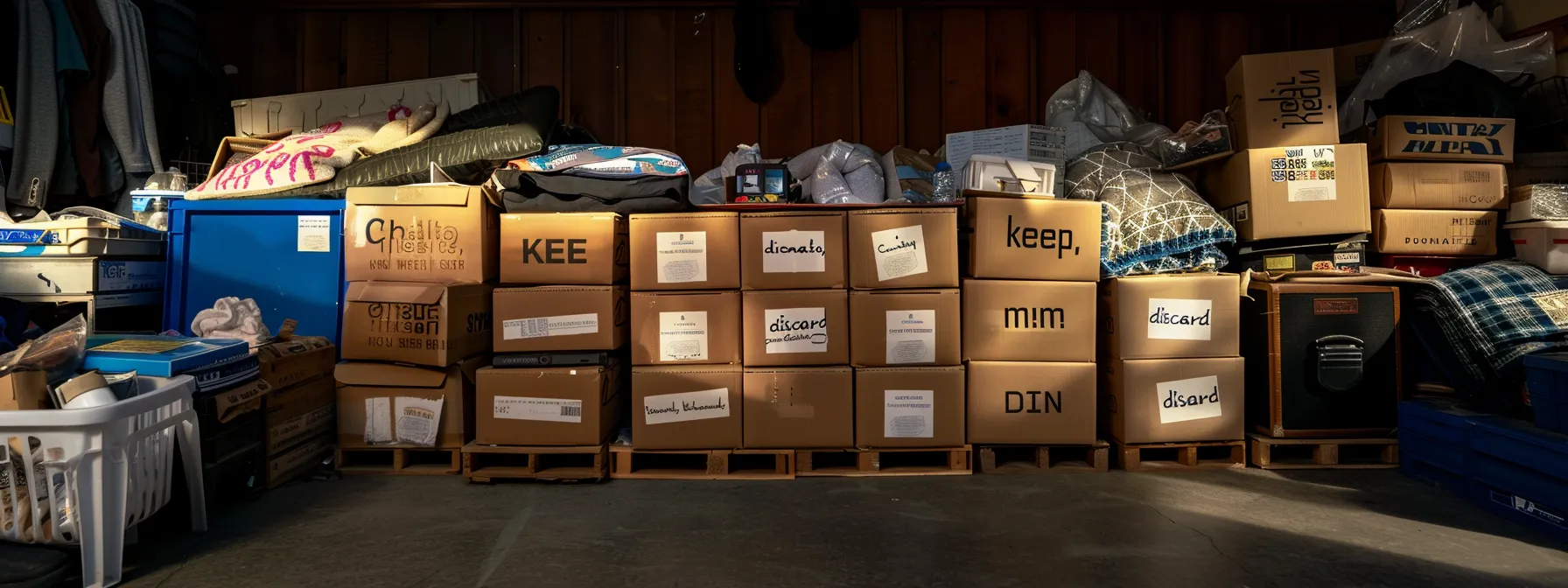
Decluttering and organizing my belongings is an essential step in ensuring a smooth moving experience. I recommend first sorting items into categories: keep, donate, or discard. Holding a garage sale or donating to charity not only helps lighten your load but can also ease the expenses associated with interstate moving services. Additionally, managing hazardous materials properly is crucial for safety. Creating an inventory of possessions prepares for transport, especially those special items that require careful handling. Each of these steps contributes to a more organized and efficient move with the help of a professional moving company or reliable removalists.
Sorting Items to Keep, Donate, or Discard
Sorting items to keep, donate, or discard is a critical step in my interstate moving process. I recommend first assessing each property to identify what I truly need, which helps reduce interstate moving costs by eliminating unnecessary items. During this process, I can categorize my belongings with a clear contract in mind: what will stay, what might serve others through donation, and what should simply be discarded to streamline my moving experience.
- Assess your belongings to understand what to keep.
- Consider donating items that still have life to community organizations.
- Discard any items that are no longer useful or in good condition.
- Keep track of the estimated expenses associated with the moving process.
- Make a list that reflects what you plan to take, donate, or throw away.
Holding a Garage Sale or Donating to Charity
Holding a garage sale or donating to charity can significantly ease the burden of your interstate move. I’ve found that selling items not only helps declutter my home but also provides a little extra cash to offset moving expenses. Additionally, donating usable items allows me to contribute positively to my community while minimizing the cargo I need to transport over long distances. Consider what no longer serves a purpose in your life as you prepare for the transition and explore ways to lighten your load:
- Organize items into categories: keep, sell, donate.
- Plan your garage sale date well in advance of your move.
- Promote your sale through social media and local community boards.
- Research local charities that pick up donations to simplify the process.
- Keep track of the items sold and donated for tax deduction purposes.
Managing Hazardous Materials Appropriately
When it comes to managing hazardous materials during an interstate move, I prioritize safety and compliance. Many common household items, such as paints, batteries, and certain cleaning products, can be considered hazardous. I always consult my chosen professional moving company for guidance on their policies regarding such items, as they typically won’t transport them. Instead, I make sure to properly dispose of these materials according to local regulations, which helps ensure a smooth moving process with my interstate movers and protects my vehicle as well.
- Identify hazardous materials in your home, like cleaners and paints.
- Consult your moving company about their guidelines for these items.
- Properly dispose of hazardous materials in accordance with local laws.
- Take note of what cannot be transported to avoid issues on moving day.
Creating an Inventory of Your Possessions
Creating an inventory of your possessions is a key step in organizing your move and can significantly simplify the process when working with an interstate moving company. I find it helpful to categorize items by room and assess their condition, which gives me a clear understanding of what I need to transport and what can be discarded or donated. This organized approach not only streamlines my packing but also allows me to budget effectively, taking into account the cost of living in my new area and ensuring compliance with any relevant law regarding moving interstate.
| Category | Item Count | Condition |
|---|---|---|
| Furniture | 8 | Good |
| Electronics | 12 | Fair |
| Clothing | 50 | Varies |
| Kitchenware | 30 | Good |
| Miscellaneous | 20 | Poor |
Preparing Special Items for Transport
When preparing special items for transport during my interstate move, I take extra care to ensure they are well protected. I especially focus on fragile items, valuable collectibles, or anything that requires customs clearance. My tips include wrapping items individually with bubble wrap, using sturdy boxes labeled clearly, and keeping a detailed inventory that includes important details like the telephone number of my moving company, such as Allied, for any questions along the way. This preparation not only helps safeguard my belongings but also streamlines the removals process.
- Identify special items that need careful handling.
- Wrap fragile items in bubble wrap and use strong boxes.
- Label all boxes clearly for easy identification.
- Keep a detailed inventory for reference.
- Have the telephone number of your moving company on hand for questions.
With your belongings sorted, the next step is finding the right team to help you move. A trustworthy moving company will make all the difference in ensuring your journey is as smooth as your fresh start.
Selecting a Trustworthy Moving Company
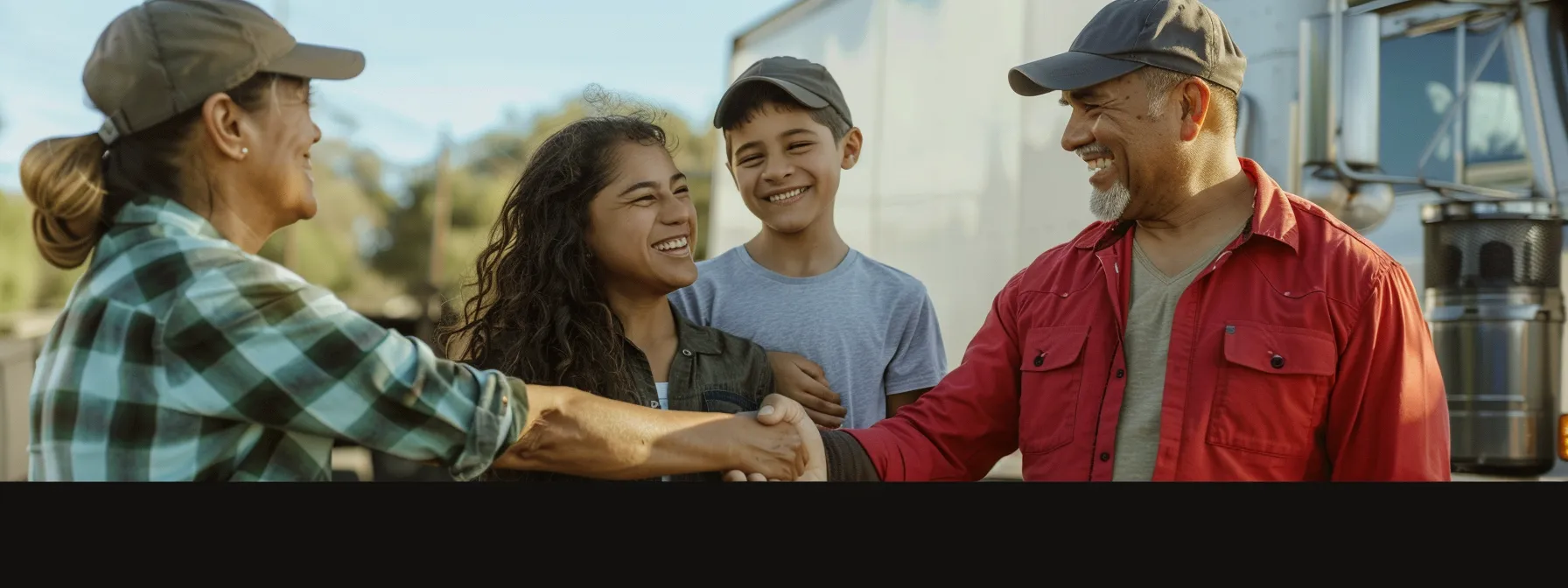
Selecting a trustworthy moving company is a vital step in ensuring a successful interstate move. I focus on researching and comparing various movers, understanding different types of estimates, and verifying licenses and insurance coverage. Reading reviews and testimonials gives insights into others’ experiences, while booking and confirming your moving date well in advance minimizes last-minute stress on moving day.
Researching and Comparing Movers
When researching and comparing movers for my interstate relocation, I prioritize verifying their credentials and reading customer reviews to ensure reliability and professionalism. I look for companies that provide clear documentation of their services and terms, especially those that feature comprehensive policies for handling fragile items with materials like bubble wrap. One mover that often stands out to me is North American Van Lines, known for their attention to detail and accessibility, making the moving process easier for customers like myself.
Understanding Different Types of Estimates
Understanding the different types of estimates is essential when selecting a trustworthy moving company, as it directly affects your overall price and satisfaction. I often come across three main types of estimates: binding, non-binding, and binding not to exceed. A binding estimate guarantees the price won’t change, which is crucial for budgeting my move, particularly when considering items like antique furniture that may require special handling by reputable companies like American Van Lines or North American Van Lines. It’s vital to verify that the moving company is registered with the Federal Motor Carrier Safety Administration to ensure compliance and reliability:
| Estimate Type | Description | Pros | Cons |
|---|---|---|---|
| Binding Estimate | Fixed price agreed upon before the move | Price certainty | May not account for additional services |
| Non-Binding Estimate | Estimated price based on inventory list | Flexible pricing | Final cost may be higher than expected |
| Binding Not to Exceed Estimate | Fixed price that cannot exceed a specific amount | Cost protection | Less common among moving companies |
Verifying Licenses and Insurance Coverage
Verifying licenses and insurance coverage is crucial in reducing the risk associated with your interstate move. I always check that the moving company I choose is properly licensed by the Federal Motor Carrier Safety Administration (FMCSA), as this not only assures their legitimacy but also protects my landlord’s assets in case of any unforeseen damages during the transport. Moreover, understanding the ballpark figures for potential claims and having sufficient insurance coverage allows me to feel secure about my belongings, ultimately enhancing my peace of mind as I navigate the moving process:
- Confirm the moving company’s FMCSA license number.
- Request proof of insurance coverage for damages.
- Review the company’s claims policy and process.
- Inquire about additional protection options if necessary.
- Keep records of all communications regarding licensing and claims.
Reading Reviews and Testimonials
Reading reviews and testimonials is a crucial part of selecting a trustworthy moving company for your interstate move. I always check platforms like Yelp or Google to see what previous customers have said about their experiences, particularly regarding moving insurance options and overall satisfaction with valuation. Pay attention to any repeated complaints, as these can reveal common issues, like poor service or lack of liability insurance that may affect your belongings during the journey.
Booking and Confirming Your Moving Date
When booking and confirming your moving date, I always ensure to finalize my arrangements well in advance to secure the moving company of my choice. It’s essential to clarify the company’s policy regarding cancellation or rescheduling, just in case unforeseen circumstances arise. As I coordinate my Long-DistanceMoving Services, I often utilize a mobile app provided by the mover to keep track of important details, making the process efficient and stress-free, especially when needing an Expedited Long-Distance Moving option if necessary:
- Research and compare movers early.
- Confirm availability on your desired date.
- Clarify cancellation or rescheduling policies.
- Utilize a mobile app to track your booking details.
- Seek expedited long-distance moving options if needed.
You have chosen a reliable moving company. Now, let’s turn to packing—where good strategies lead to easy moves and safe travels.
Packing Strategies for Efficiency and Safety
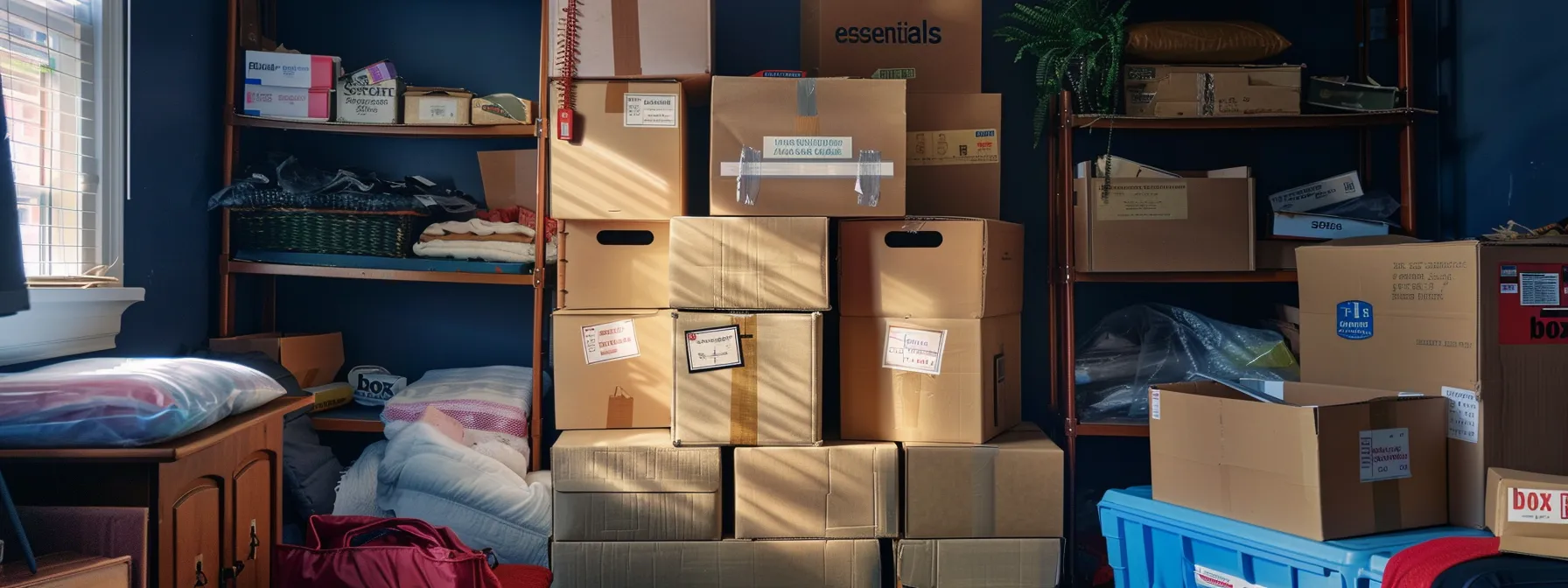
Gathering necessary packing supplies is the first step to ensuring a smooth interstate move. I recommend adopting a room-by-room packing strategy for efficiency, making it easier to label boxes for quick unpacking later. Special attention should be given to protecting fragile items, while having an essentials box ready for immediate use will simplify your transition. Throughout this process, I’ll share practical insights to streamline your packing experience for both interstate moves and local moves.
Gathering Necessary Packing Supplies
Gathering necessary packing supplies is a pivotal first step in ensuring a smooth interstate move. I recommend starting by consulting with your estate agent or a reliable resource to understand what materials might be available locally. Thorough research ahead of time helps avoid last-minute stress, allowing me to collect sturdy boxes, proper padding, and packing tape well before moving day. By knowing what to expect and having the right supplies on hand, I can save time and energy, making the entire process feel more manageable and organized.
Packing Room by Room Methodically
Packing room by room is a systematic approach that has significantly simplified my interstate moves in the past. By focusing on one room at a time, I can efficiently gather and pack items without feeling overwhelmed, ensuring each box is labeled clearly for an easy unpacking process. This method not only keeps everything organized but also allows me to track any cash or valuable items, making it easier to secure them during the move.
Labeling Boxes for Easy Unpacking
Labeling boxes for easy unpacking is a crucial strategy I always use to streamline my interstate move. I make it a point to organize and label each box by room and content, ensuring I write clear descriptions on the outside. This simple yet effective practice saves me valuable time during the unpacking process, allowing me to locate essential items quickly and reducing the frustration of rummaging through unmarked boxes after a long journey.
Protecting Fragile Items
When it comes to protecting fragile items during an interstate move, I always take the extra steps necessary to ensure their safety. I recommend wrapping each delicate piece individually with bubble wrap and placing them in sturdy, appropriately sized boxes. Additionally, I arrange heavier items at the bottom and lighter, more fragile ones on top to minimize the risk of damage. By treating fragile items with care and attention, I feel confident that they will arrive at my new home in perfect condition, helping to alleviate the stress that often accompanies long-distance moves.
Preparing an Essentials Box for Immediate Use
Preparing an essentials box for immediate use is crucial for a smooth transition during my interstate move. I always include items that I will need right away—such as toiletries, a few changes of clothes, important documents, and basic kitchen supplies—to ensure I don’t have to dig through countless boxes on the first night. This proactive approach not only simplifies my settling-in process, but it also reduces stress, allowing me to focus on everything that needs my attention right as I arrive at my new home.
Now that your packing is sorted, it’s time for the heavy lifting. Moving day awaits, and managing it well will make all the difference.
Managing Moving Day Effectively
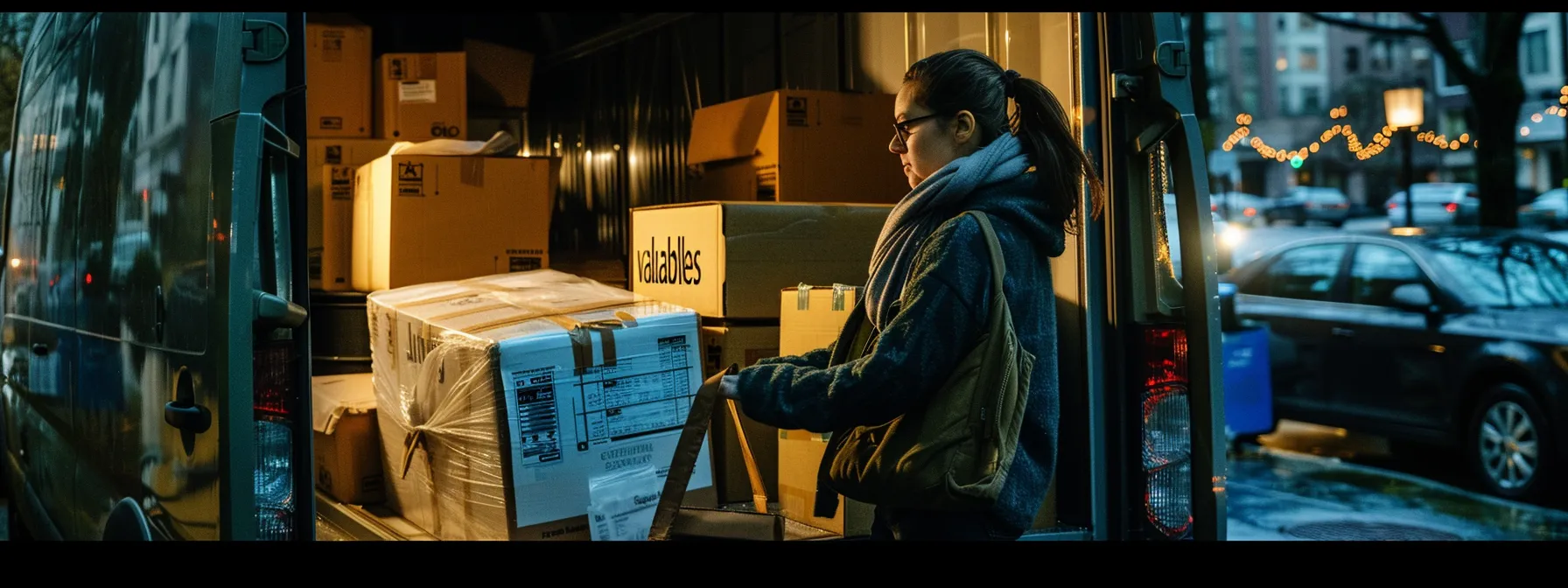
Effective management on moving day involves careful coordination with your movers, ensuring that everything runs smoothly. I also conduct final checks of my home to confirm nothing is left behind. Ensuring safe access for the moving personnel and keeping my valuables and essentials readily available is crucial. Lastly, documenting the condition of my items helps safeguard against potential issues during the move. Each of these steps contributes to a stress-free interstate moving experience.
Coordinating With Your Movers
Coordinating with my movers on the day of the interstate move is essential for a seamless experience. I always ensure to communicate clearly about the timing and any specific details regarding access to my home, such as parking and location of main entrances. This proactive approach helps facilitate a smooth loading process and minimizes delays, allowing everyone to stay on schedule for the move:
- Confirm arrival times with the moving team.
- Provide clear directions to my home, ensuring easy access.
- Prepare a designated area for movers to load items efficiently.
- Keep communication lines open for any last-minute questions.
Conducting Final Checks of Your Home
Conducting final checks of my home on moving day is essential to ensure nothing is overlooked before I leave. I always walk through each room, verifying that all personal belongings are packed and nothing is left behind, especially in closets, drawers, and storage areas. This step not only protects my valuables but also helps me confirm that I’ve completed everything needed for a smooth interstate move:
- Check all rooms, including basements and attics.
- Inspect cabinets, closets, and under sinks.
- Make sure utilities are disconnected as planned.
- Confirm that all windows and doors are locked.
- Leave behind any necessary information for the new residents, if applicable.
Ensuring Safe Access for Moving Personnel
Ensuring safe access for moving personnel is vital for a smooth moving day. I always take proactive steps to clear pathways, especially in crowded or narrow areas, to allow movers to navigate easily with heavy items. By designating specific parking locations and removing any obstacles, I facilitate efficient loading and unloading, which helps keep the moving schedule on track and reduces the risk of accidents or delays:
- Clear pathways inside and outside the home.
- Designate parking spots for moving trucks.
- Remove any potential obstructions, such as furniture and debris.
- Check weather conditions and prepare for any necessary solutions, like mats for wet days.
- Communicate access points clearly to the moving team.
Keeping Valuables and Essentials With You
On moving day, I make it a priority to keep my valuables and essentials close at hand. I pack a designated bag filled with important items such as passports, medications, and valuable jewelry to ensure they are secure during the transition. This way, I can easily access what I need, reducing stress and allowing me to focus on the logistics of my interstate move without worrying about the safety of my most precious belongings.
Documenting the Condition of Your Items
Documenting the condition of my items is a crucial step during my interstate move, as it helps protect my interests should any damage occur. I recommend taking detailed photographs of each valuable item—especially furniture and electronics—before loading them onto the moving truck. This creates a visual record that can serve as evidence if I need to file a claim with the moving company, ensuring my possessions arrive safely at my new destination:
| Item | Condition | Notes |
|---|---|---|
| Leather Sofa | Good | No visible damage, minor wear on the armrests. |
| 42-inch TV | Excellent | Original packaging available for added protection. |
| Dining Table | Fair | Scratches on the surface, otherwise stable. |
| Artwork | Good | Framed with glass; ensure careful transport. |
Moving day ends, but the journey isn’t over. The real work begins as you start to make that new place feel like home.
Settling Into Your New Home Seamlessly
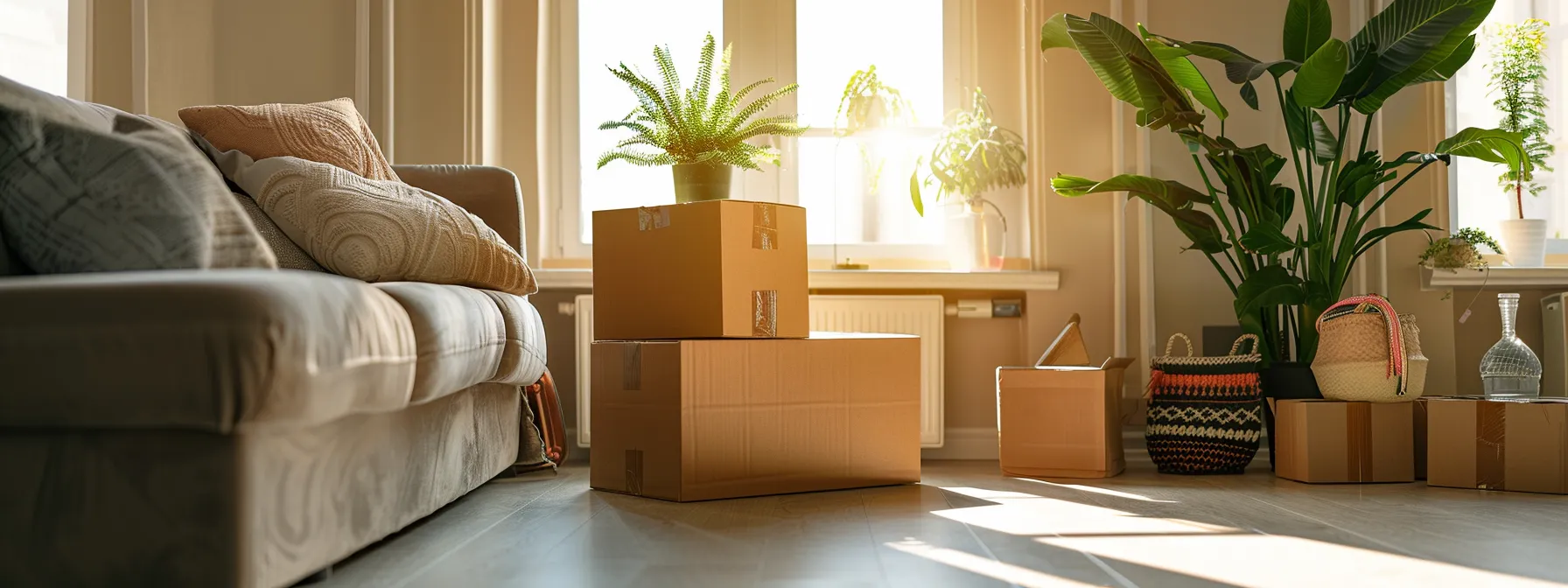
Unpacking and organizing my space is the first step to feeling at home after an interstate move. I also focus on connecting utilities and services to ensure a comfortable living environment. Updating my address and records is essential to keep everything in order. Additionally, I make an effort to meet my neighbors and explore my new community, which helps me adjust to my environment smoothly.
These steps not only make settling in easier, but they also enhance my overall moving experience. In the following sections, I will share practical tips for unpacking effectively, setting up utilities, and building connections in my new neighborhood.
Unpacking and Organizing Your Space
Unpacking and organizing my space is an essential step to feeling at home after an interstate move. I find it helpful to tackle one room at a time, starting with areas that are most frequently used, such as the kitchen and bedroom. By systematically unpacking, I can quickly arrange my belongings in a way that makes sense for my new layout, reducing frustration and saving time in the process. The clarity gained from this organized approach significantly enhances my settling-in experience, allowing me to focus on enjoying my new environment rather than being overwhelmed by boxes.
Connecting Utilities and Services
Connecting utilities and services is a critical step to ensure my new home is comfortable and functional right from the start. I always prioritize setting up essential services such as electricity, water, gas, and internet before my move-in date to avoid any disruptions upon arrival. I recommend checking with local providers in advance, as some may require appointments for installation or activation, allowing for a seamless transition into my new environment and preventing any unnecessary stress during the settling-in process.
Updating Your Address and Records
Updating my address and records is a necessary step to ensure a smooth transition after my interstate move. I always make a comprehensive list of all entities that need to be notified, such as my bank, utility companies, and subscription services, to avoid potential disruptions. By taking this simple yet crucial action early on, I can focus on settling into my new home without the worry of missing important correspondence or services.
| Entity to Notify | Action Required |
|---|---|
| Bank | Update address for account statements and services. |
| Utility Companies | Notify about your new address to transfer services. |
| Insurance Providers | Update your address for home, auto, and health policies. |
| Subscription Services | Change address for magazines, streaming services, etc. |
| Department of Motor Vehicles | Update your driver’s license and vehicle registration. |
Meeting Neighbors and Exploring the Community
Meeting neighbors and exploring the community are essential steps in settling into my new home after an interstate move. I always recommend introducing myself to those living nearby, as building relationships can provide helpful local insights and resources. To further integrate myself, I enjoy visiting local parks, shops, and community events, allowing me to discover what my new area has to offer while fostering connections that enhance my sense of belonging.
Tips for Adjusting to Your New Environment
Adjusting to my new environment after an interstate move requires a proactive approach. I found that immersing myself in the local community helps ease the transition; I attended neighborhood events and explored nearby parks, which allowed me to connect with my surroundings and meet new people. Additionally, I recommend familiarizing myself with essential services, like grocery stores and healthcare facilities, as this not only builds confidence in navigating the area but also enhances my overall settling-in experience.

